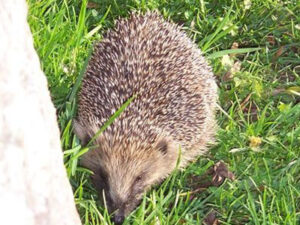Burial grounds can be surprisingly rich in biodiversity, supporting a fantastic array of different species. Whilst some plants and animals may move into a well-managed burial ground it is more likely that most have been there for a long time, a reflection of the timelessness of these places and the consistent management that they have received. Burial grounds were never set up to be havens of wildlife so why have they become them? The answer lies in the changes that have taken place to the rest of our crowded country rather than changes within our churchyards and cemeteries. Agricultural intensification, development, pollution and the everyday use of chemicals has inexorably reduced our biodiversity, in particular in the last 60 years. Burial grounds tend to escape these changes and offer us a glimpse of a past world.
Look out for stonework covered in lichens which may have taken centuries to grow. Start with the encircling wall then move onto the monuments where different rock types and nooks and crannies created by carving give a perfect substrate for lichens to colonise. Ferns, mosses and liverworts may be there too and all sorts of invertebrates; spiders beetles, snails and solitary bees and wasps all find a niche within the stonework of a burial ground. Larger animals such as slow worm, lizards, frogs, toads and newts may hunt and shelter amongst the stones as may hedgehogs, mice and voles.
The turf of a burial ground is the flowery, meadow turf of our history. In the past this area of open, grassland was managed as a hay crop with the hay making up part of the vicar’s stipend. Following the hay cut, sheep or a pony would have grazed it down. Whilst most burial grounds are now managed by mechanical cutting, provided the grass cuttings are collected and removed, the species that have thrived for centuries will persist. Insects, small mammals and birds all utilise this species-rich grassland and in the autumn, grassland fungi such as colourful waxcaps and spindles can be found.
It is the combination of all the features that make burial grounds so special. Stonework with its nooks and crannies, flowery grassland with the rich array of species, trees particularly the ancient and veterans. There are growing, feeding, nesting, roosting and hibernating places for all sorts of plants, animals, fungi and lichens and we are still learning about just how good they are for biodiversity. Please let us know what species are found in your local churchyard or cemetery via our Beautiful Burial Ground project.
If you find our resources helpful, please consider making a donation towards supporting our work.


